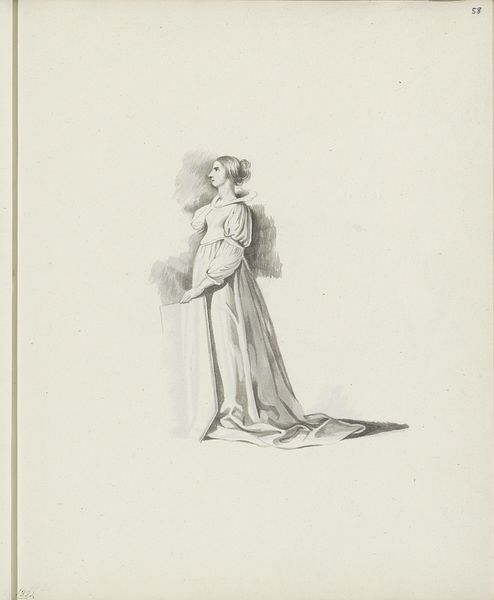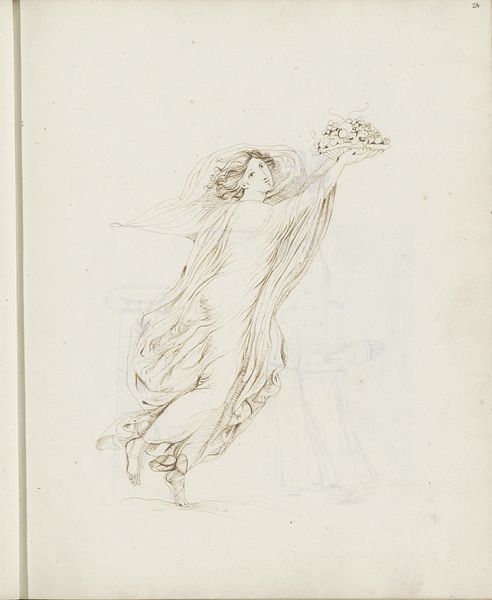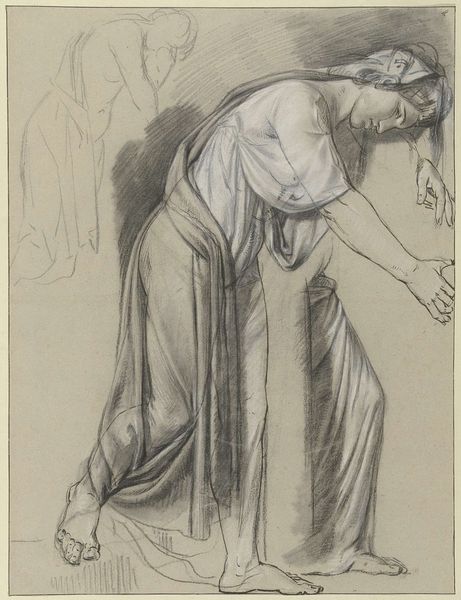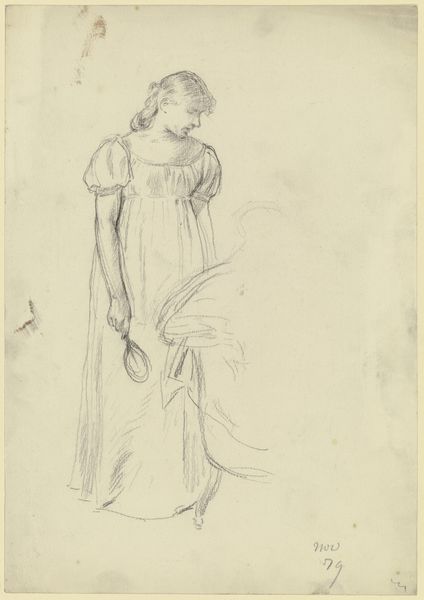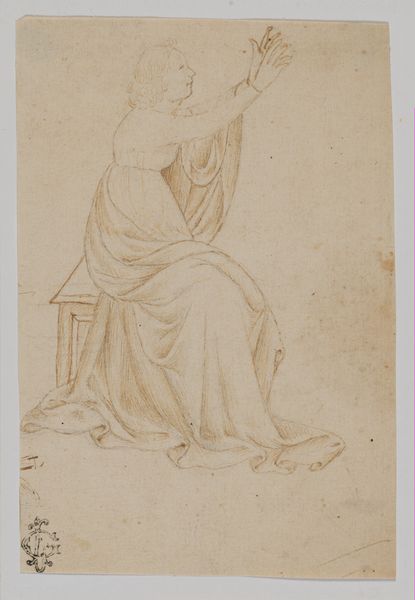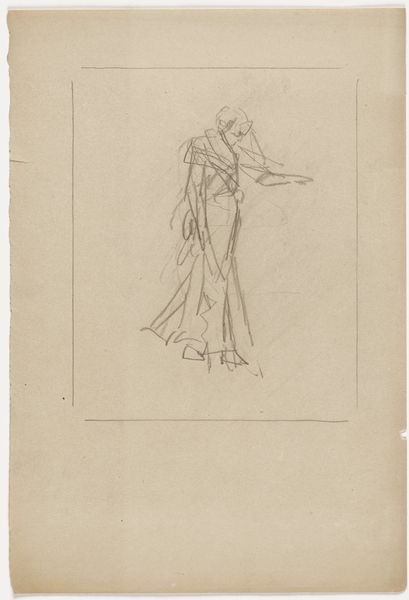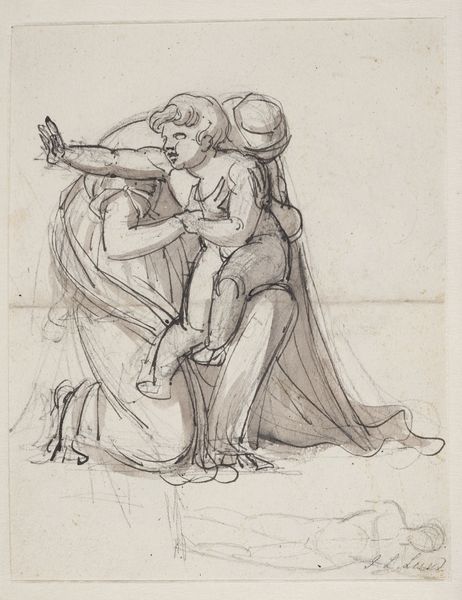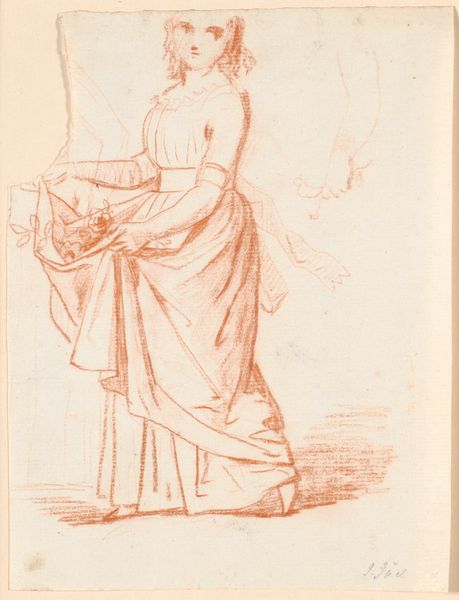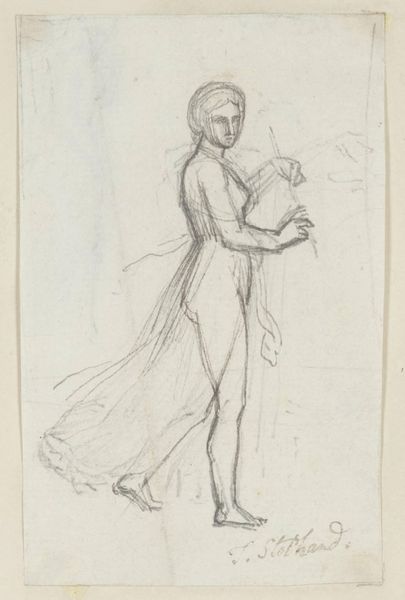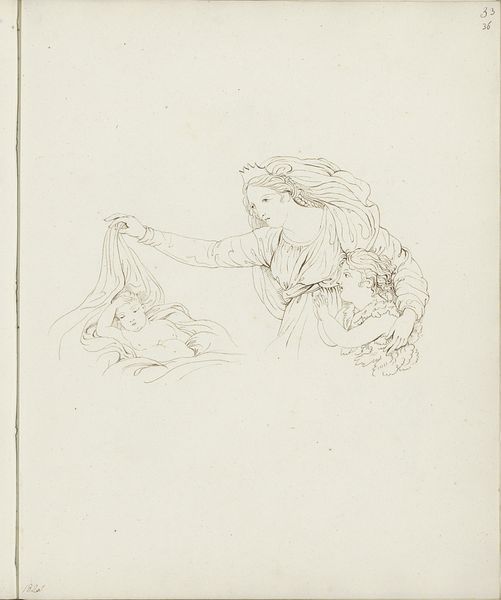
drawing, pencil
#
portrait
#
drawing
#
neoclacissism
#
pencil sketch
#
figuration
#
pencil
Copyright: Rijks Museum: Open Domain
Curator: Looking at this work, I'm immediately struck by its ethereality. It feels almost like a whisper on paper. Editor: Exactly. What we have here is a pencil drawing from 1816 titled "Goddess Playing the Lyre, After a Classical Example," made by the noblewoman Elisabeth Kemper. It's a very direct nod to neoclassicism. Curator: Neoclassicism definitely shines through! The woman is draped in simple robes, almost like a statue come to life, her gaze directed upwards. But what about the faint drawings of vases in the background? They add a dreamlike quality, like she’s emerging from antiquity itself. Editor: Absolutely. It’s clever how the composition is staged like a classical tableau. Notice how the lyre mirrors the shape of the vases—a powerful symbol of harmony, balance and refined taste so embraced during that era. The lyre, especially, resonates with themes of Apollo, representing order, music, and civilized arts. Curator: It does carry those associations but maybe she wasn’t making art that's just brainy, just historical. Those flowing lines, the gentleness of the pencil strokes, convey such softness—a vulnerability. She almost looks as though she's singing or about to sing. Editor: Indeed. The light touch definitely imbues her with a sensitivity that contrasts the stern associations of neoclassicism. The iconographic clarity gives the image intellectual depth, but the gentle lines hint at a yearning for something more emotive, something personal. It's interesting how that visual language balances control and freedom. Curator: To me it’s almost heartbreaking; so precise, but tinged with something fragile. As if, at any moment, she might fade back into those faint lines, back into the past. Editor: Perhaps. These classicizing gestures were quite ubiquitous in this time. Still, her unique hand lends something quietly expressive, almost rebellious in its subtlety. We can perhaps glimpse there a woman of intellect finding expression, giving shape to an aesthetic ideal, in a time when few others had such an opportunity. Curator: A melody lingering in pencil dust then! That’s what will stay with me. Editor: And for me, the harmony of intellectual intention and emotional openness of art gives cause for pondering. It offers a deep connection between epochs of artistic vision.
Comments
No comments
Be the first to comment and join the conversation on the ultimate creative platform.
